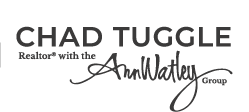
The air is warmer, the days are getting longer, and after an exceptionally snowy winter, the grass is starting to reveal itself. Spring is upon us, which means all that snow is going to melt. Be sure to take these important steps to protect your home and prevent major water damage during the thaw.
- Clear away any snow and ice from your home’s foundation, including window wells, to avoid leaks and possibly flooding as it melts.
- Take a closer look. Seal and repair any cracks in your walls, foundation, and around windows to ensure moisture does not penetrate the building. If you discover a leak, even a small one, consider contacting a professional. Water damage can escalate quickly and repairs are costly.
- Clear out built-up ice and debris from your eavestroughs and downspouts. This is an integral part of your home’s water draining system, and if the flow is clogged, it can result in major damage. If there is a drain on the street near your property, be sure to clear any leaves and garbage away from the grate so melting snow from the road can flow freely.
- Beware of overhead leaks. If your roof is in need of repair, this is likely the time you will become aware of it. You may start to see water spots form on your ceiling. Do not ignore the signs! These stains are a sign that the roof has sustained damage, which has caused a water leak. Don’t forget to check for leaks in the attic as well.
- Before you turn on the air conditioning for the first time this season, inspect the unit to ensure it is functioning properly. This is also the perfect time to replace your furnace filter and change the batteries in your smoke and carbon monoxide detectors.
During the spring thaw, indoor upkeep is as important as preparing your garden for spring. Freshen rooms, remove allergens, and brighten the look of these five areas:
- Windows and treatments: While cleaning glass, wipe grime from sills and frames. Take this opportunity to wash drapes and remove dust from blinds.
- HVAC vents: Thoroughly vacuum and dust these areas. If anyone in your household has severe allergies or asthma, consider hiring a professional duct cleaning service to remove buildup that can encourage mould growth and dust mites.
- Furniture and walls: Wipe down walls and use a small brush to clean accent areas where dirt hides. Spot clean hard-to-reach places and previously unseen splatters, crayon markings, and grease marks.
- Carpets and upholstery: Floor coverings need regular attention from your vacuum; sweep up “dust bunnies” and cobwebs from every corner and mop any exposed flooring. Carefully apply sprays or cleaning products to remove stains (after testing in an inconspicuous area). It may also be time for a thorough shampoo—rent a professional machine to sanitize the padding underneath and remove moisture.
- Ceiling Fans: Dust blades before turning them on; otherwise, you might undo all the work you’ve done cleaning the rest of the room! Unseen allergy irritants and mould can reduce a home’s value. Make an annual date to “detail” your house; you’ll keep it in prime condition for years to come.
